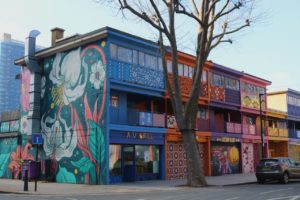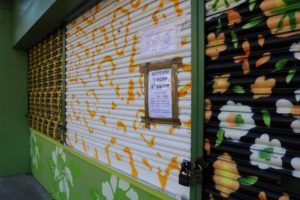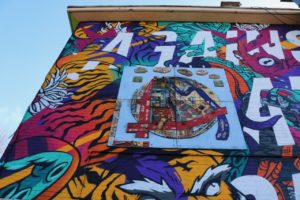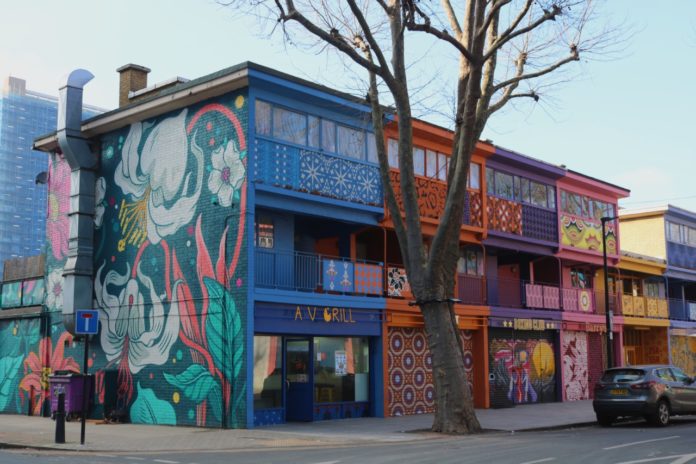 Aberfeldy St, Poplar
Aberfeldy St, Poplar
Aberfeldy Street in Poplar was given a colourful makeover in August 2020, as part of a lockdown support project to help businesses attract new customers. The initiative aims to create a unique ecosystem aligned with overall redevelopments in the area.
Locals came up with the patterns and designs, which were inspired by a Bangladeshi tradition of recycling old textiles, and the London Mural Company carried out the painting. Some say that the work took over 600 litres of paint, 200 spray cans and two weeks of work to complete. From one of the murals you get an approving look from Tommy Flowers, a local hero and Post Office engineer who built Colossus, the world’s first programmable electronic computer. It was used to to solve encrypted German messages, which did not stop a German bomb from landing here on the first day of the Blitz on Sept 7th 1940.

This area saw its first boom during the Age of Exploration as London capitalised on ship building and trade with Asia. Poplar is by the old East India Docks, which imported commodities such as tea, spices, Persian carpets and other exotic goods during the 18th and 19th Centuries. From the 1960s onwards the docks here declined and eventually moved to Tilbury, leaving Aberfeldy Street and the surrounding area struggling economically.

But in recent years Aberfeldy street has shown a remarkable growth and through the mural project has reinvented itself with the help of its residents and local government. Now it is important more than ever before to support our high streets and to not abandon them. For the people who live here these paintings are about more than presenting an eye-pleasing façade – for them these paintings are a focal point for people to meet and discuss the future.

